Scientists have long wondered why zebras have stripes. A recent study seems to show an unexpected reason – to confuse flies so that it’s hard for them to land.
Zebras are famous for their strong pattern of black and white stripes. Usually when an animal has a special feature, that feature helps the animal in some way. For years, scientists have puzzled over how stripes might help zebras.
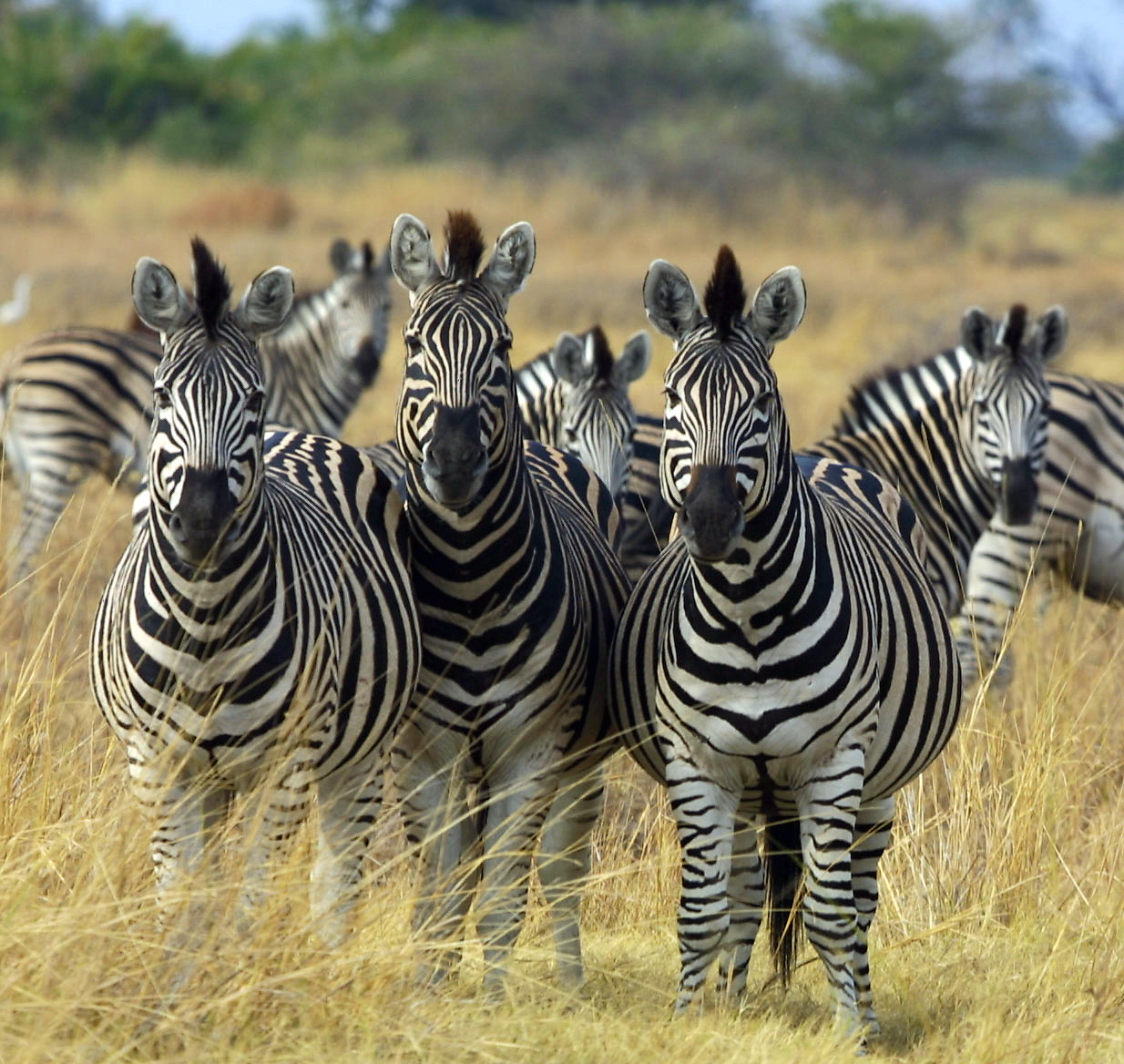
(Source: Photo: Paul Maritz/Modified: Pharaoh Hound [CC BY-SA 3.0], via Wikimedia Commons.)
Some scientists think the stripes might share some information about the zebra with other zebras. Others thought the stripes might be some kind of camouflage. Camouflage is when something is colored to make it blend in with the things around it. Scientists have also wondered if the stripes might help cool the animals down.
More recently, most scientists have begun to agree that the stripes help zebras avoid biting insects. Horses and zebras are often attacked by large, blood-sucking insects called horseflies. Besides bothering the animals and feeding off of them, horseflies can carry diseases.
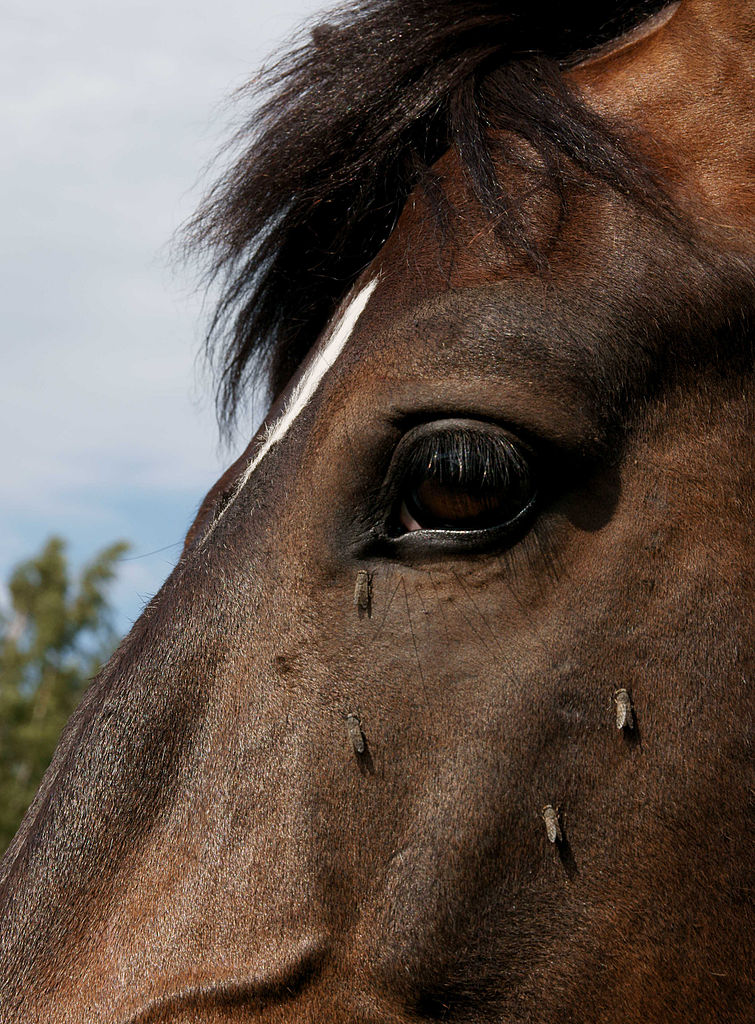
(Source: kallerna [CC BY-SA 3.0], via Wikimedia Commons.)
Now a group of scientists working in the UK have used a creative experiment to help explain how stripes help zebras – by confusing the insects, making it hard for them to land on zebras in the first place.
In one part of the experiment, the scientists filmed three zebras and seven solid-colored horses. Then they used the videos to map the paths taken by the horseflies. They noticed that the flies landed on the horses about four times more often than they landed on the zebras. When the horseflies tried to land on the zebras, they often timed the landing wrong. They flew past or bumped into the zebra instead of landing gently.
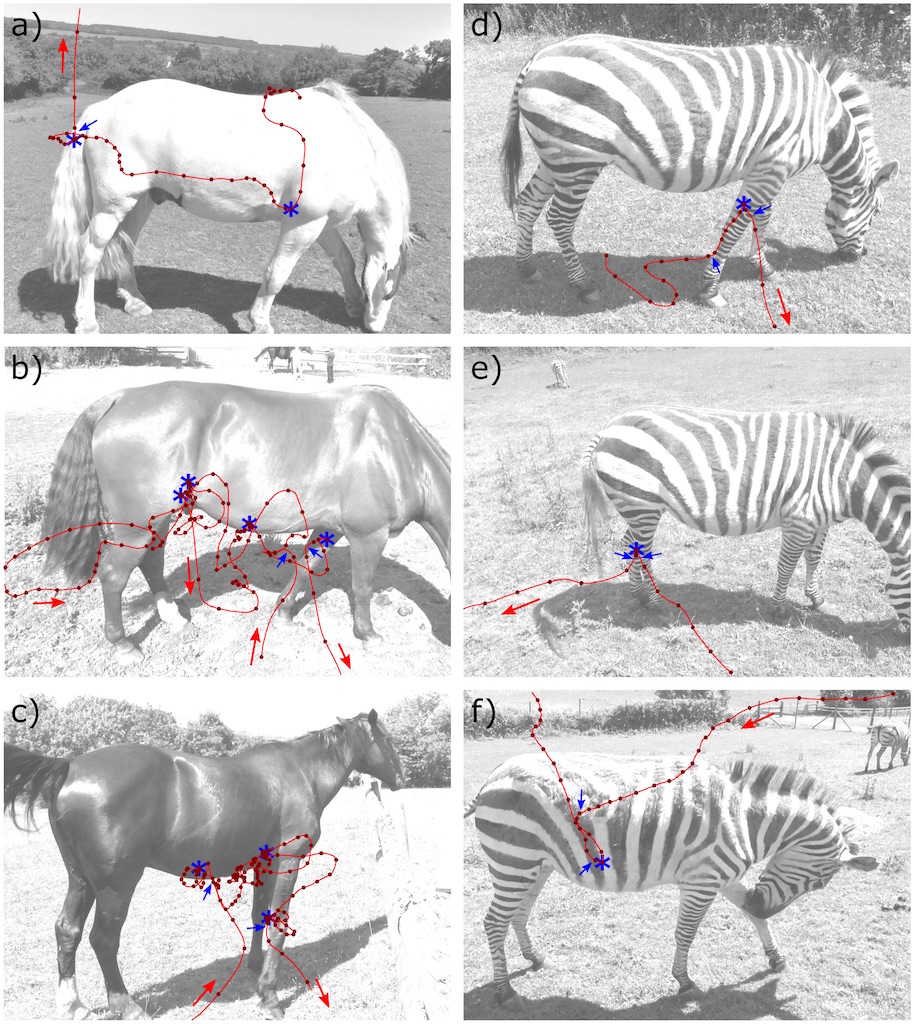
(Source: Tim Caro, Et al., viaPLOS One.)
To test whether it was the pattern or something else that kept the insects from landing, the scientists put different coats on the horses. One coat was white, one was black, and one was striped like a zebra. The scientists discovered that the zebra striped coat seemed to keep horseflies from landing. The coats made no difference to the way flies attacked the horses’ heads, which were not covered.
The scientists think that the zebra stripes trick the eyes of the flies. From far away, the zebras may look solid gray, so the flies zoom in fast, feeling sure of where they are going. But once they get close and discover things are black and white, they may get confused. But by then it’s too late for them to slow down and land safely.
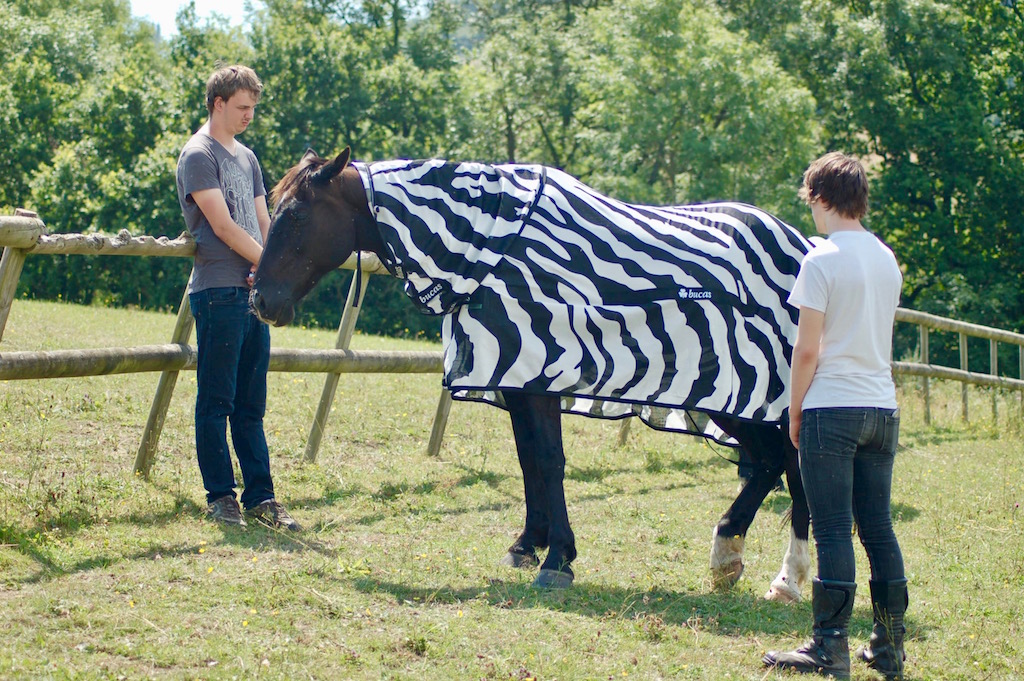
(Source: Tim Caro/UC Davis.)
Not only did the insects land on the zebras less often, they didn’t stay long once they landed. To get rid of the insects, the animals can twitch (shake their skin suddenly) or flick with their tails. Zebras use their tails much more often than horses, so horseflies can never stay on them for long.
The scientists now want to do more experiments using coats that have different kinds of stripes to learn what makes zebra stripes work so well.
Did you know…?
The idea that zebra stripes might make it hard to figure out where to attack something is not new. In World War I, warships were painted with zebra stripes, called “dazzle camouflage”.
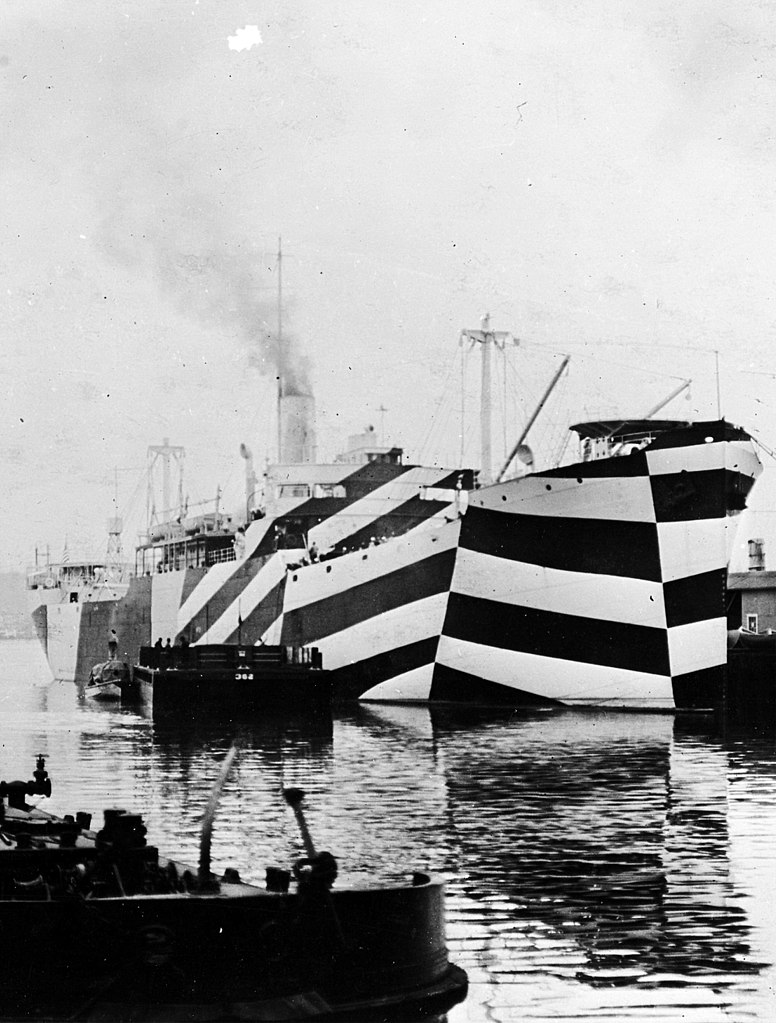
(Source: Naval History & Heritage Command, via Wikimedia Commons.)
Dazzle camouflage wasn’t meant to hide the ships. It was meant to make it hard for the enemy to figure out exactly where a ship was and which way it was moving.
People are still not sure whether the zebra stripes worked well for ships, but they seem to work well for zebras.
